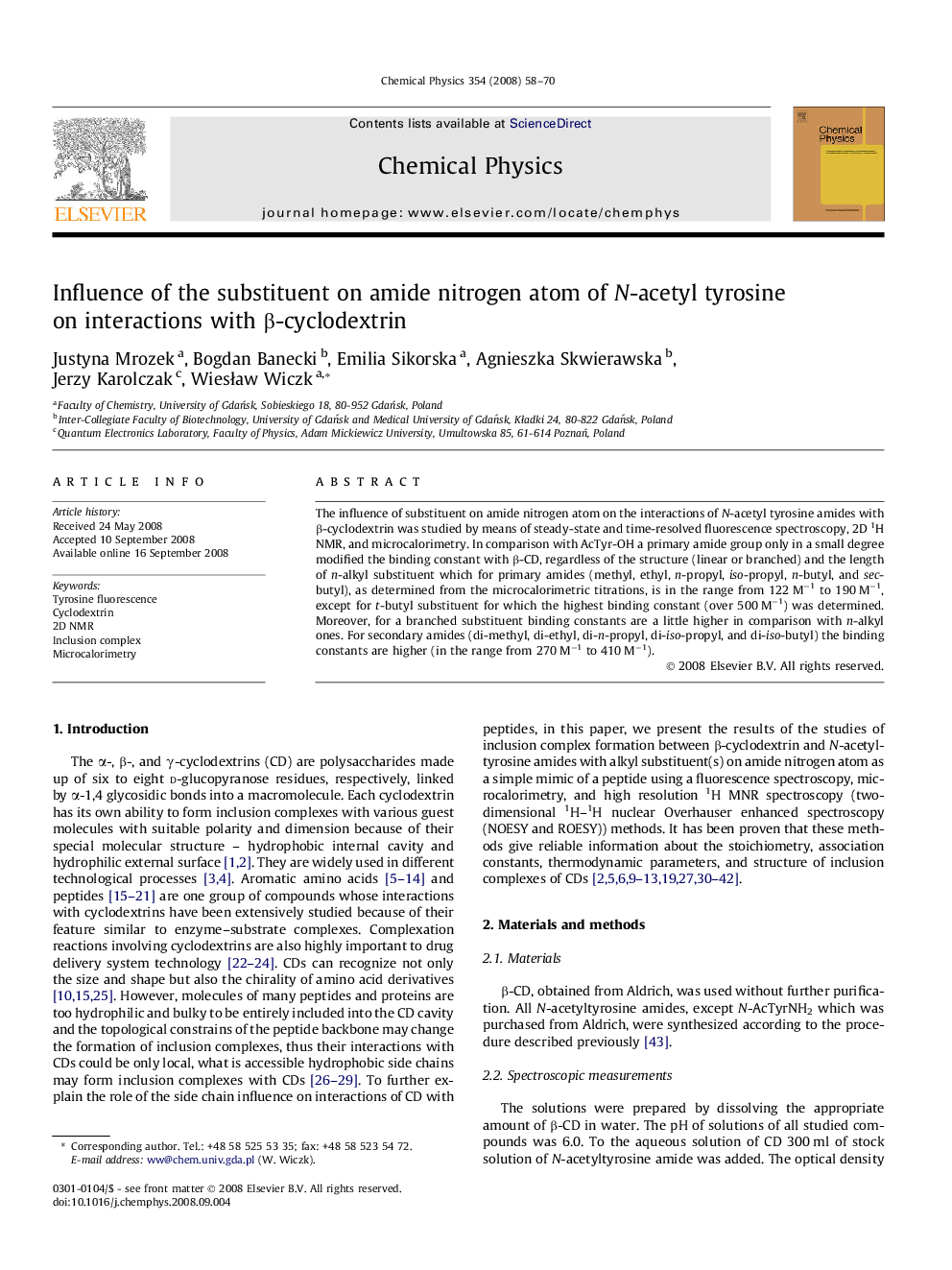| Article ID | Journal | Published Year | Pages | File Type |
|---|---|---|---|---|
| 5375785 | Chemical Physics | 2008 | 13 Pages |
Abstract
The influence of substituent on amide nitrogen atom on the interactions of N-acetyl tyrosine amides with β-cyclodextrin was studied by means of steady-state and time-resolved fluorescence spectroscopy, 2D 1H NMR, and microcalorimetry. In comparison with AcTyr-OH a primary amide group only in a small degree modified the binding constant with β-CD, regardless of the structure (linear or branched) and the length of n-alkyl substituent which for primary amides (methyl, ethyl, n-propyl, iso-propyl, n-butyl, and sec-butyl), as determined from the microcalorimetric titrations, is in the range from 122 Mâ1 to 190 Mâ1, except for t-butyl substituent for which the highest binding constant (over 500 Mâ1) was determined. Moreover, for a branched substituent binding constants are a little higher in comparison with n-alkyl ones. For secondary amides (di-methyl, di-ethyl, di-n-propyl, di-iso-propyl, and di-iso-butyl) the binding constants are higher (in the range from 270 Mâ1 to 410 Mâ1).
Related Topics
Physical Sciences and Engineering
Chemistry
Physical and Theoretical Chemistry
Authors
Justyna Mrozek, Bogdan Banecki, Emilia Sikorska, Agnieszka Skwierawska, Jerzy Karolczak, WiesÅaw Wiczk,
